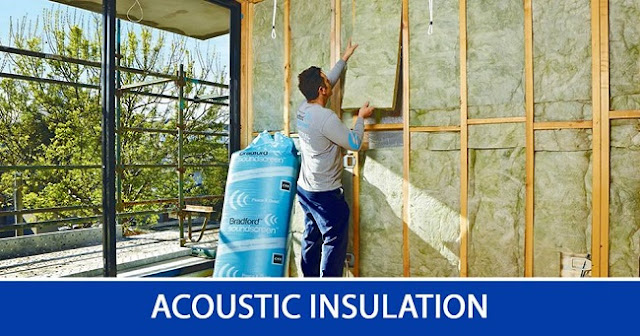Insulation For Your Home: The Best Solutions For A Colder Winter
As the freezing temperatures set in, many of us start to question whether or not it’s the right time to insulate our homes. If you live in a colder climate and are wondering if Acoustic Insulation is right for you, the answer is a resounding yes. In fact, insulating your home can actually be a great option if you’re in a colder climate and don’t want to turn on the heat until it’s really needed. Here are the best solutions for a colder winter:
Double-Wall Insulation
Double-Walled insulation is the best option for people who live in a colder climate. It’s a type of insulation that is made of TWO pieces of plastic or metal that are glued together. This helps to keep you and your home warm in the winter. Not only will double-walled insulation keep you and your home warm, but it also helps to protect your home from fire. Double-Walled insulation is often more affordable than single-wall insulation, and it’s also less likely to cause problems with air infiltration and moisture infiltration.

Thermal Insulation: The Best Way To Keep Your Home Warm
Thermal insulation is the best way to keep your home warm in the colder months. It’s an effective way to reduce your heating and cooling bill, and it can also help keep your home more comfortable during the winter. Thermal insulation comes in different types, depending on the climate that you live in. You can find insulation products in both spray and non-spray forms. The most common type of insulation is cellulose insulation, which is found on ceilings and walls.
When sprayed on, cellulose insulation will create a heat-retaining barrier that will keep your home warm even when it’s minus 30 degrees outside. Non-spray Acoustic Insulation is less effective at holding heat against the cold, but it’s still an effective option if you live in a colder climate and don’t want to turn on the heat until it’s really needed. Non-spray insulation is often used for ceilings, where there are no constraints on space or visibility. This type of insulation is usually used as an add-on to a standard roofing system.
Air Barrier Insulation: The Best Way To Keep Your Home Warm
Insulating your home is one of the most important steps you can take to keep it warm in the winter. Air barrier insulation is a type of insulation that helps keep air from entering and exiting your home. Air barrier insulation is often used in colder climates because it can help reduce the chances of your home becoming too cold for comfort. Additionally, air barrier insulation can help reduce the noise and drafts that come from your home. And finally, air barrier insulation can help protect your home from fire.
Wall-To-Wall Air Containment Insulation: The Best Way To Keep Your Home Warm
wall-to-wall air containment insulation is the best way to keep your home warm in a colder climate. The main benefit of this type of insulation is that it will keep the air inside your home consistent with the air outside. This means that you won’t have to worry about fluctuating temperatures and heat loss. Additionally, wall-to-wall air containment insulation is affordable and easy to install. You just need a few screws and a C-section cut out of the wall, and you’re ready to go.
Airtight Encapsulated Insulation: The Best Way To Keep Your Home Warm
Airtight encapsulated Christchurch insulation is the best way to keep your home warm in a colder climate. With this type of insulation, you’re protected from the cold weather outside, and the inside can be kept at a comfortable temperature. By using airtight insulation, you’ll reduce the chance of moisture infiltration and ensure that your home is warmer all winter long.
# reduced noise and heat loss: Green roofs can help reduce noise and heat loss. Green roofs are great for reducing noise and heat loss. When it comes to insulation, green roofs are one of the best options because they work to reduce moisture infiltration, which can lead to increased noise levels and decreased energy efficiency.
# Better ventilation: A well-ventilated home will stay warm all winter long. A well-ventilated home will stay warm all winter long, which is perfect if you’re looking for a place to sleep that won’t get too hot or too cold. By using good ventilation, you’ll be able to breathe easily and keep your home comfortable all winter long.
# improved indoor air quality: Insulating your home with an airtight system will improve indoor air quality. Insulating your home with an airtight system will improve indoor air quality in a colder climate.
Conclusion
In order to keep your home warm this winter, you’ll need to invest in some insulation! Double-wall insulation, thermal insulation, air barrier insulation, and wall-to-wall air containment insulation are the most common types of insulation and will each keep your home warm. Be sure to consult with an experienced home inspector to determine the best solutions for your specific home.



Comments
Post a Comment